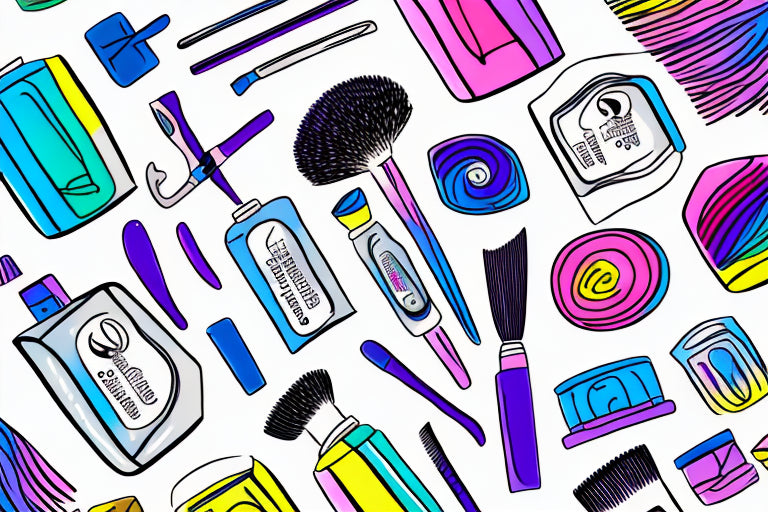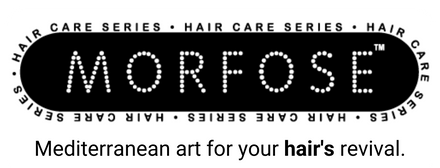How to Care for Your Hair After Coloring: Tips and Tricks for Healthy Hair
Posted by MORFOSE COSMETICS

How to Care for Your Hair After Coloring: Tips and Tricks for Healthy Hair
If you've recently colored your hair, you might be wondering how to keep it looking healthy. While the coloring process can leave your hair looking beautiful and shiny, it can also cause damage if you don't take proper care of it afterwards. Here are some tips and tricks to help you care for your hair after coloring.
Understanding the Hair Coloring Process
Before diving into caring for your hair after coloring, it's important to understand the basics of the hair coloring process. Hair dye works by penetrating the outer layer of the hair shaft and depositing color molecules. The more porous your hair, the easier it is for the color to penetrate. This is why previously damaged or processed hair may color more easily than virgin hair.
When coloring your hair, it's important to consider the current health of your hair. If your hair is already damaged, it may not be able to handle the stress of coloring. In this case, it's best to wait until your hair has had time to heal before attempting to color it.
Types of Hair Dyes
There are several types of hair dyes available, including temporary, semi-permanent, demi-permanent, and permanent. Temporary hair dyes last for a single wash and are a good option if you want to experiment with a new color without committing to it long-term. Semi-permanent dyes last for several washes and can add subtle color to the hair. Demi-permanent dyes last longer and can cover grey hair, while permanent dyes provide long-lasting, vibrant color.
When choosing a hair dye, it's important to consider the level of commitment you're willing to make. If you're not sure about a certain color, it's best to start with a temporary or semi-permanent dye. This will give you a chance to see how the color looks on your hair before committing to a longer-lasting option.
How Hair Coloring Affects Your Hair
While hair coloring can give you a beautiful new look, it can also damage your hair if you're not careful. Coloring can make your hair more porous, which can lead to breakage and dryness. This is why it's important to take extra care of your hair after coloring.
One way to minimize the damage caused by coloring is to use a deep conditioning treatment on a regular basis. This will help to restore moisture to your hair and keep it looking healthy and shiny.
Choosing the Right Hair Color for You
Choosing the right hair color is key to keeping your hair looking healthy after coloring. Make sure to choose a shade that complements your skin tone and natural hair color. It's also important to consider the level of upkeep required for your chosen color, so make sure to talk to your stylist about the maintenance needed to keep your hair looking its best.
In addition to considering your skin tone and natural hair color, it's also important to think about the overall look you're trying to achieve. Do you want a bold, vibrant color or a subtle, natural look? Your stylist can help you choose the perfect color to achieve your desired look.
Remember, hair coloring is a fun and exciting way to change up your look, but it's important to take care of your hair to keep it looking its best. With the right care and maintenance, you can enjoy beautiful, vibrant hair for years to come.
Preparing Your Hair for Coloring
Before coloring your hair, it's important to prepare it properly to minimize damage. Here are some steps you can take to prep your hair:
Deep Conditioning Treatments
Deep conditioning treatments can help to strengthen and moisturize your hair before coloring. Use a high-quality conditioner with ingredients like protein and keratin to help fortify your hair and reduce breakage. You can also try using a hot oil treatment to really nourish your hair and prepare it for the coloring process. Simply heat up some coconut or olive oil, apply it to your hair, and leave it on for 30 minutes before rinsing it out.
Hair Trimming and Detangling
Trimming your hair before coloring can help to reduce split ends and avoid further damage. Make sure you detangle your hair carefully with a wide-tooth comb to avoid any unnecessary breakage or damage. It's also a good idea to avoid using any heat styling tools for a few days before coloring, as this can dry out your hair and make it more prone to damage.
Testing the Hair Dye on a Strand of Hair
Performing a patch test on a small section of hair is a crucial step in the hair coloring process. This can help you to avoid any allergic reactions to the dye and also give you an idea of how well the color will take to your hair. To perform a patch test, simply apply a small amount of the dye to a section of hair behind your ear and leave it on for the recommended amount of time. If you experience any itching, burning, or redness, do not proceed with coloring your hair.
By taking these steps to prepare your hair before coloring, you can help to minimize damage and achieve beautiful, vibrant color that lasts.
Post-Coloring Hair Care Routine
After coloring your hair, it's important to have a post-coloring hair care routine to keep your locks looking their best. Here are some tips:
Waiting Period Before Washing Your Hair
Wait at least 24-48 hours before washing your hair to allow the color to settle. This can help to minimize the amount of dye that is washed out of your hair.
During this waiting period, it's important to avoid any activities that may cause you to sweat excessively, such as exercising or spending time in a sauna. Sweat can cause the dye to wash out of your hair, which can lead to uneven color or premature fading.
Using Color-Safe Shampoos and Conditioners
Use shampoos and conditioners that are specifically formulated for colored hair to help preserve your new hair color. These products contain ingredients that help to protect the hair and prevent color fading.
When selecting a color-safe shampoo and conditioner, look for products that are sulfate-free. Sulfates are harsh detergents that can strip the hair of its natural oils and cause color to fade more quickly.
Incorporating Hair Masks and Treatments
Hair masks and treatments can help to nourish your hair and keep it looking healthy after coloring. Use a deep conditioning treatment at least once a week to help restore moisture and keep your hair looking shiny and soft.
For an extra boost of hydration, try using a hair mask that contains natural oils, such as coconut oil or argan oil. These oils can help to penetrate the hair shaft and provide deep conditioning benefits.
In addition to hair masks, consider incorporating a leave-in conditioner into your hair care routine. Leave-in conditioners can help to detangle the hair, reduce frizz, and provide added moisture throughout the day.
Avoiding Heat Styling
Heat styling tools, such as flat irons and curling irons, can cause damage to colored hair and lead to color fading. To keep your hair looking its best, try to limit your use of heat styling tools as much as possible.
If you do need to use heat styling tools, be sure to use a heat protectant spray to help minimize damage. Additionally, try to use the lowest heat setting possible to achieve your desired style.
Protecting Your Hair from the Sun
Exposure to the sun can cause color to fade more quickly, so it's important to protect your hair when spending time outdoors. Consider wearing a hat or scarf to shield your hair from the sun's rays.
You can also use a hair product that contains UV protection to help prevent color fading. These products can help to shield your hair from the damaging effects of the sun and keep your color looking vibrant.
By following these post-coloring hair care tips, you can help to keep your hair looking healthy and vibrant for weeks to come.
Maintaining Your Hair Color
Once you've got your new hair color, it's important to take steps to maintain it and keep your locks looking vibrant. Here are some tips:
Protecting Your Hair from Sun Exposure
Exposure to the sun can cause your hair color to fade over time. Protect your hair from the sun by wearing a hat or using a UV-protective spray when you're outside for long periods of time.
Additionally, it's important to note that the sun's rays can also damage your scalp, leading to dryness, flakiness, and even sunburn. So, not only will protecting your hair from the sun help maintain your hair color, but it will also benefit the health of your scalp.
Avoiding Chlorine and Salt Water
Both chlorine and salt water can cause your hair color to fade and your hair to become more brittle. Avoid swimming in chlorinated or salt water, or wear a swim cap to protect your hair.
Chlorine is a harsh chemical that can strip your hair of its natural oils, leaving it dry and prone to breakage. Salt water, on the other hand, can be extremely drying, causing your hair to become brittle and more susceptible to damage. If you do swim in chlorinated or salt water, be sure to rinse your hair thoroughly with fresh water afterwards to remove any residue.
Reducing Heat Styling Damage
Heat styling tools like curling irons and straighteners can cause your hair to become more brittle, which can lead to breakage and color fading. Use heat styling tools sparingly and always use a heat protectant spray when you do.
It's also important to note that blow drying your hair on high heat can also cause damage. To minimize damage, try air-drying your hair as much as possible and using a lower heat setting on your blow dryer.
Finally, consider investing in high-quality heat styling tools that are designed to minimize damage to your hair. Look for tools with ceramic or tourmaline plates, which help distribute heat more evenly and reduce the risk of hot spots that can cause damage.
With these tips and tricks, you can keep your hair looking healthy and vibrant after coloring. Remember to take extra care of your hair during the coloring process, and give it the TLC it deserves after.


